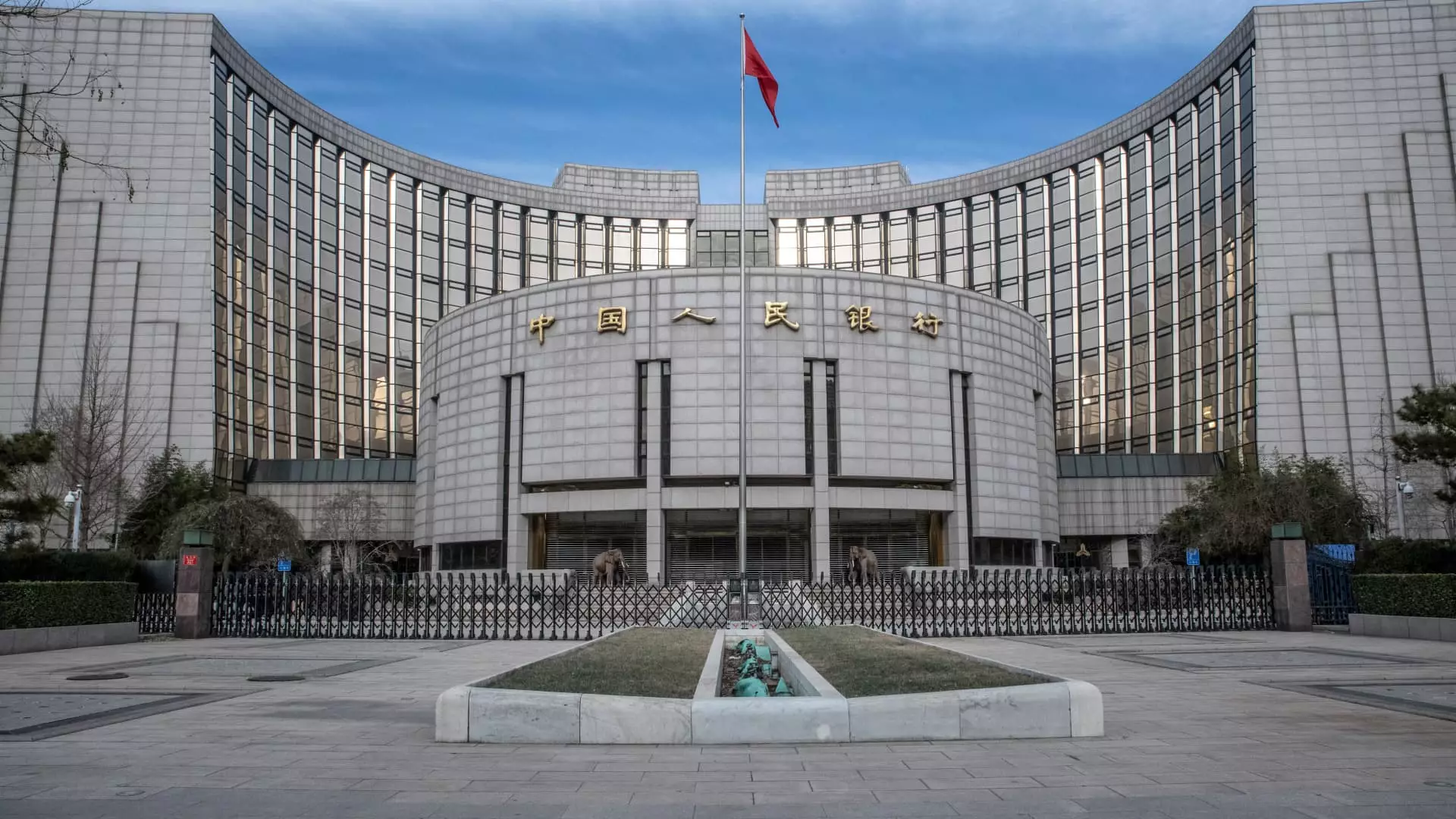On Wednesday, China’s central bank decided to keep its key lending rates unchanged, reflecting a cautious approach as the country evaluates the effects of its recent stimulus attempts. The People’s Bank of China (PBOC) maintained the one-year loan prime rate (LPR) at 3.1% and the five-year LPR at 3.6%. This decision had been anticipated by market observers, suggesting a collective expectation of a wait-and-see attitude as the economic landscape remains challenging. Bruce Pang, the chief economist with JLL, highlighted the absence of an immediate need for adjustments, indicating confidence in the current measures while acknowledging ongoing assessments of their impact on the economy.
One of the key factors influencing the PBOC’s decision is the persistently low net interest margins in Chinese commercial banks. These narrow margins significantly restrict the banks’ capacity to lower lending rates further. Despite the pressure for potential policy shifts, Pang noted that meaningful reductions may not occur until 2025, indicating a longer-term outlook on monetary easing. The LPR influences a substantial portion of the credit market in China, making the implications of any changes highly significant for both corporate and household borrowers.
The timing of the PBOC’s announcement comes on the heels of disappointing economic data for October, which revealed stagnation in various sectors. Industrial production and fixed asset investment fell short of expectations, further exacerbating concerns regarding the health of the economy. The annual drop in real estate investment deepened, reflecting the struggles within the property market that has been at the heart of China’s economic woes. Despite the overall lackluster momentum, retail sales slightly outperformed forecasts, suggesting that the government’s stimulus efforts are beginning to yield results in certain areas.
In response to the sluggish economic performance, Chinese authorities have ramped up a series of stimulus measures to invigorate growth. A recently announced five-year fiscal package of 10 trillion yuan (approximately $1.4 trillion) aims to address the local government debt crisis while underscoring a commitment to ongoing economic support. PBOC Governor Pan Gongsheng indicated a desire to sustain a supportive monetary policy, hinting at the possibility of further rate cuts before the year concludes, although the consensus seems to lean toward a cautious approach.
Financial analysts have been closely monitoring the economic trajectory as slowing growth seems poised to become a reality in the coming years. Morgan Stanley predicts that China’s economic growth may hover around 4% for the next two fiscal years, downgrading equities to a “slight underweight.” They cite the risk factors of a deflationary environment and escalated trade tensions, which add layers of uncertainty. Similarly, Goldman Sachs projects GDP growth to further decline to 4.5% by 2025, down from 4.9% this year. This ambiguity among analysts signals a cautious outlook on both domestic consumption and broader investor sentiment.
External factors also play a crucial role in shaping China’s economic framework. The potential return of higher tariffs on Chinese exports resulting from geopolitical shifts, such as Donald Trump’s electoral success, raises questions about the resiliency of China’s export-dependent economy. As uncertainties loom over trade relations, China’s economic growth may encounter additional headwinds, necessitating strategic policy shifts to cushion against possible downturns.
As China grapples with economic challenges, the central bank’s recent decision to maintain lending rates underscores a complex balancing act between immediate policy reactions and longer-term assessments. With stimulus measures underway, the hope remains that these will translate into tangible growth momentum. However, market observers are united in their caution, suggesting that the road ahead may be fraught with challenges that require deft navigation by policymakers and stakeholders alike.


Leave a Reply